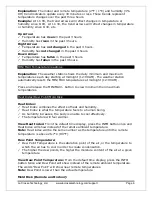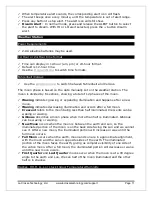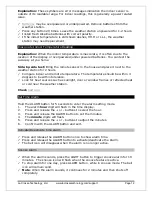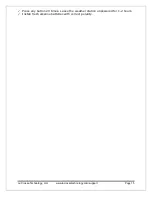
La Crosse Technology, Ltd. www.lacrossetechnology.com/support
Page 9
Distance/Resistance/Interference
Distance:
The maximum transmitting range in open air is over 200 feet (60 meters)
between the remote sensor and the weather station. This range is in open air
with ideal conditions.
Consider what is in the signal path between the weather station and the remote
sensor.
Avoid placing electronics in the signal path between the weather station and the
remote sensor.
Resistance:
Obstacles such as walls, floors, windows, stucco, concrete and large metal
objects can reduce the range.
When considering the distance between the remote sensor and the weather
station (200 feet open air), cut that distance in half for each wall, window, tree,
bush or other obstruction in the signal path.
Closer is better.
Windows reflect the RF (radio frequency) signal.
Metal absorbs the signal and reduces the range.
Stucco has a metal mesh that absorbs the signal.
Do not mount the remote sensor on a metal fence. This significantly reduces the
effective range.
Interference:
Consider items in the signal path between the remote sensor and the weather
station.
Sometimes a simple relocation of the remote sensor or the weather station will
correct the interference.
Windows can reflect the radio signal.
Metal will absorb the RF (radio frequency) signal.
Stucco has a metal mesh that absorbs signal.
Avoid transmitting antennas: (ham radios, emergency dispatch centers, airports,
military bases, etc.)
Electrical wires (utilities, cable, etc.)
Vegetation is full of moisture and reduces signal.
It is difficult for RF (radio frequency) signal to travel through a hill.
Temperature Alerts
Explanation: The remote and indoor temperature alerts are set in two separate
steps.
Set the alert value.
Arm/Disarm the alert.
Select Temperature Alert Values:
The forecast station offers individual, programmable high and low temperature and
humidity alerts.

































